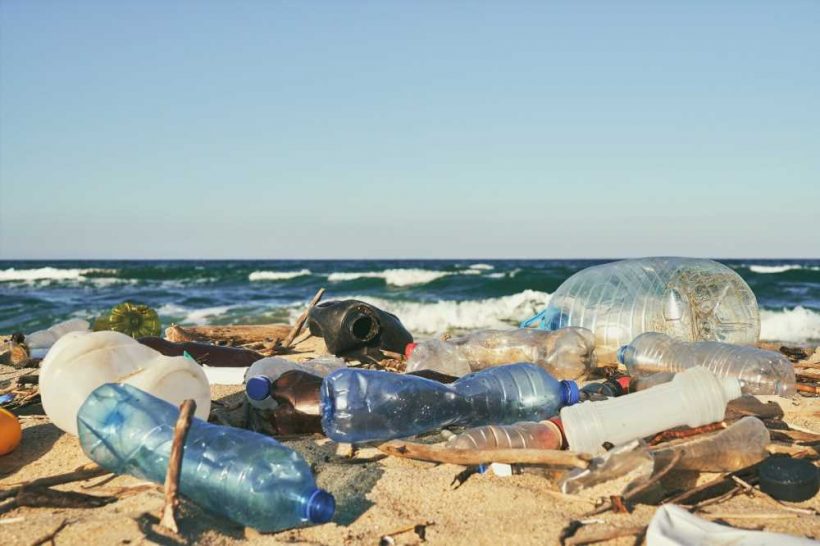In a recent study published in the journal Science of the Total Environment, researchers examine exposure to microplastics (MPs) in plastic factory personnel.
 Study: Environmental Impacts of Microplastics and Nanoplastics: A Current Overview. Image Credit: Larina Marina / Shutterstock.com
Study: Environmental Impacts of Microplastics and Nanoplastics: A Current Overview. Image Credit: Larina Marina / Shutterstock.com
The impact of MPs on the environment
In the early 1950s, only about a few tons of plastic products were manufactured each year. Over the past several decades, the manufacturing of plastics has increased at an astronomical level to produce about 400 million tons of plastic each year.
Various environmental factors including abrasion, photooxidation, and other biotic degradation pathways cause these plastic materials to degrade into MPs and nanoplastics (MNPs). Microplastics (MPs), which are tiny particles of plastic that are five millimeters (mm) or smaller in diameter, often contaminate oceans, soil, and air. Surface wind circulation and surface water mixing contribute to the dispersion of MPs in the environment.
The minute size of MPs and MNPs increase the likelihood of their ingestion by numerous species, including humans. MPs have the potential to disrupt cellular membranes and cause oxidative stress; however, these particles have also been shown to act as pollutant transport media for other toxic compounds such as the industrial insecticide dichlorodiphenyltrichloroethane (DDT) and the common fungicide hexachlorobenzene.
The ubiquitous nature of MPs and their potential to cause harm to a wide range of organisms illustrates the importance of identifying sources of exposure to MPs to understand their associated risks.
About the study
In the present study, researchers evaluate occupational exposure to MPs among employees in a plastic factory in Iran. Twenty workers from the jumbo bag sewing section of the factory were recruited. Individuals with coronavirus disease 2019 (COVID-19) and those taking hourly leaves were excluded.
Participants were instructed to clean their face, mouth, hair, and hands with filtered water before and after leaving the workplace. These samples were prepared for MP extraction and filtration.
Filters were dried and transferred to Petri dishes for examining their physical and chemical properties. MPs were observed under a microscope, enumerated, and classified based on their shape, size, and color.
Polymer composition was identified using micro-Raman spectroscopy. The Shapiro-Wilk normality test was used to assess data normality. The Wilcoxon test compared the number of MPs between dependent samples, whereas the Mann-Whitney U test compared differences between independent samples.
Study findings
Of the 20 participants, one female worker was excluded, leaving 10 male and nine female participants for analysis. When the number of MPs on participants’ faces was assessed before and after work, significant differences between females who used sunscreens and males with mustaches and beards were observed.
Additionally, significant differences in the number of MPs were evident before and after shifts in the hair and hand samples of females who used scarves and gloves. The number of MPs in all samples significantly differed after the work shift. Overall, there were 1,739 MPs identified in samples before the work shift, which increased to 3,063 MPs by the end of the day.
There was a significant difference in the number of MPs in the hair, hand, saliva, and face mask samples before and after the work shift. MPs were grouped into four categories including fiber, film, spherule, and fragment. Fiber MPs were the highest in frequency at 4,632, followed by spherules and fragments at 95 and 75, respectively.
A total of 1,856 MPs were over 1,000 micrometers (μm) in size, whereas 1,478 particles were between 500-1000 μm, 1,020 particles were between 250-500 μm, 294 particles were between 100-250 μm, and 154 particles were less than 100 μm in size.
After the work shift, MPs were larger in hand and hair samples, whereas MPs were smaller in saliva and facial skin samples at this time. A total of 2,012 MPs were transparent/white, 1,184 were black, 1,146 were blue/green, 298 were red, and 162 were purple.
Forty MPs were selected for spectroscopic analysis. Of these, 34 were fibers made of polyester, polyamide, nylon, high-density polyethylene, polybutylene terephthalate, and polyethylene terephthalate. Six MPs were spherical or polyhedral in shape and consisted of polyethylene terephthalate.
Conclusions
The researchers identified 4,802 MP particles in different samples from factory personnel. Features like beard/mustache, clothing, and cosmetic product use influenced exposure to MPs.
Hair samples exhibited the highest concentration of MPs, which also significantly increased after work. Further research is required to investigate how these MPs impact human health.
- Amobonye, A., Bhagwat, P., Raveendran, S., et al. (2021). Environmental Impacts of Microplastics and Nanoplastics: A Current Overview. Frontiers in Microbiology 12. doi:10.3389/fmicb.2021.768297.
- Shahsavaripour, M., Abbasi, S., Mirzaei, M., & Amiri, H. (2023). Human occupational exposure to microplastics: A cross-sectional study in a plastic products manufacturing plant. Science of The Total Environment. doi:10.1016/j.scitotenv.2023.163576
Posted in: Men's Health News | Medical Science News | Medical Research News | Women's Health News
Tags: Coronavirus, covid-19, Frequency, Hair, Manufacturing, micro, Microscope, Oxidative Stress, Public Health, Raman Spectroscopy, Research, Skin, Spectroscopy, Stress

Written by
Tarun Sai Lomte
Tarun is a writer based in Hyderabad, India. He has a Master’s degree in Biotechnology from the University of Hyderabad and is enthusiastic about scientific research. He enjoys reading research papers and literature reviews and is passionate about writing.
Source: Read Full Article






